Issue #54: Shortcake Season
What's Better Local, A Favorite Shortcake in Maine, Recipe for Cream Shortcakes
I hope you enjoy this issue of Kitchen Sense. I have certainly enjoyed getting it ready. Shortcake is one of my favorite desserts. While you are making it, why not listen to the new episode of my What’s Burning podcast, for which I interview chef Tanya Holland, chair of the James Beard Foundation Awards committee. The Beard Awards return to Chicago next week, so it’s timely to hear how they have evolved under her leadership. Tanya also shares insights about the challenges facing a woman of color in the predominantly white, male world of celebrity chefs and restaurateurs. Thanks for your continued support. —Mitchell
The first local strawberries have arrived in our farmers markets. This is a happy time.I married someone who happens to be allergic to strawberries, so when I buy them, I get to eat them all. I’ve already eaten more than my share.
Local isn’t necessarily better, mind you. I relish the idea of supporting local economies and keeping land from being developed by supporting those who farm on it. Still, the environmental impact of small-scale local versus high-volume, long-distance production continues to be debated. When it comes to carbon footprint, most of the evidence leans in favor of the latter. What’s more, the viability of local production at scale to feed a large, densely populated area is questioned by many, unless you happen to live in a very productive growing region.
Regardless, it is irrefutable that certain things are just better grown locally because they cannot be shipped long distances. Often, this is because you can plant varieties to sell locally that have not been bred for long-term storage and long-distance travel. Strawberries, raspberries, peaches, some other fruit, tomatoes, tender shoots or baby anything—these are among the things that are just better grown somewhere close to where you live. (I will note that the Japanese have mastered long-distance shipping of the most perishable and pristine fruit, just to let the world know that it can be done. But it comes at a high cost and requires distribution and logistics systems geared toward delicate, perishable items, which ours is not.)
As with everything, the price of berries has risen noticeably this year. I was stunned when I saw the first Harry’s Berries organic strawberries at Eataly several weeks back. These berries come from California, they are organically produced, they are sweet and delicious—an exception that proves the rule that local berries are better. At $9 a pint, they were a splurge in years past, but also a hot commodity, selling out shortly after they were displayed at 9 am. I would indulge on occasion because they were here before local berries and they were always good. When I first spotted them this year, the price had jumped to almost $17 (!) and I just couldn’t do it. Nor could others, it seems, because there were several boxes left one evening at 5 pm, when I took this photo.
Now that the local berries are in the market, though, you can have a pint of good, ripe berries for $6. Still a lot to pay for a little fruit, but within my range of justifiability. At these prices, though, it behooves one to do something special with them besides scarfing them down while you unpack your other groceries. Too expensive for jam, instead, I propose shortcake.
When I was growing up, strawberry shortcake mostly consisted of dry sponge cake layers that were sold in the fruit section of the grocery store, which my mother garnished with fresh berries and whipped cream. It was only as an adult that I learned about the southern biscuit-style of shortcake—a truer shortcake, some would argue, because of the way the fat in the dough inhibits or “shortens” gluten formation to produce its distinctive, friable texture.
The best strawberry shortcake I’ve ever had—and that I’m fortunate to be able to enjoy at least once a year—comes not from the south but from Beth’s Farm Market in Warren, Maine. The market grows their own berries, which they macerate in sugar until they are soft and juicy. They milk the cows to produce their own cream, which is so rich and thick it barely needs whipping to hold its shape. The cake is a sort of a baking-powder biscuit loaf that is sliced and placed in the bottom of a paper bowl onto which the berries and their natural juices are ladled. The whole thing is topped with a scoop of that cream. Eaten on picnic tables with a plastic spoon, it is heaven.
The other day, with a pint of Finger Lakes strawberries on the counter and some additional blueberries in the fridge, I stumbled on a recipe for shortcake in recent a column by Yotam Ottolenghi in the Guardian. His biscuit dough was enriched with double cream and laminated in a way that was new to me. I was intrigued. I tried it. And it was an unequivocal hit with my husband and our dinner guests. I adapted the recipe for American ingredients and measures and made it again. And again.
A Few Notes
When it comes to shortcake, I’m a bit of a purist. Sure, you can add all kinds of flavorings. Ginger is common, so are fresh mint, cinnamon and lavender. I like these flavors, but mostly I just want the flavor of the best, ripest fruit to shine through. I prefer a touch of sugar and fresh lemon or lime juice to macerate the fruit, and some vanilla in the cream, nothing more. For the same reasons I prefer the fruit fresh, macerated, but not cooked. If you have inferior fruit, go ahead and flavor it, cook it, do what you can to make it as delicious as can be. But if your fruit is fresh and ripe and sweet, leave it alone.
If using peaches, it’s best to peel them before slicing. Cut an X in the bottom and drop them into boiling water for a minute or two. Drop in ice water or rinse under running cold water, and the peel should lift off.
I prefer to rub the butter into the flour by hand, which gives the finished shortcakes a nice texture. But you can also use a food processor to make quick, easy work of it. The trick is not to overwork the dough. As you will see in the photos, I keep things quite undermixed because the dough will come together as you work with it and roll it out. The shortcakes are best if chilled for a couple of hours before they are baked. So, I like to make them in the afternoon, chill them, and then bake them just before serving so they can be assembled and eaten warm.
RECIPE: Cream Shortcakes with Fresh Fruit
Yields 6 servings
3 to 4 cups of fresh, ripe fruit, rinsed and dried, such as strawberries, raspberries, blueberries, peeled and sliced peaches or nectarines, or a combination
1 lemon or lime
2 tablespoons granulated sugar, plus extra for the fruit
1 ½ cups (190g) all-purpose flour, or a combination of all-purpose, pastry, and perhaps other low-protein rye or einkorn flours
1 ½ teaspoons baking powder
¼ teaspoon baking soda
½ teaspoon kosher salt, plus another pinch
6 tablespoons (90g), unsalted butter, cut into ½-inch cubes, chilled
1/3 cup buttermilk, chilled
2 cups heavy cream, chilled, divided
1 egg
1 tablespoon water
2 tablespoons turbinado sugar
3 tablespoons powdered sugar
1 teaspoon pure vanilla paste or extract
3 tablespoons jam of a complementary fruit flavor, such as strawberry, raspberry, blueberry, peach, or wildflower honey (optional but yummy)
Place the prepared fruit in a medium bowl. Taste the fruit. Depending on how sweet and/or tart it is, sprinkle with 2 or 3 tablespoons of sugar and the juice of half to a whole lemon or lime. Note, even the sweetest or tartest fruit requires a little sugar and juice to facilitate maceration. You need to draw out the juices. Toss the fruit to mix, cover, and let sit at room temperature for at least an hour. Line a half sheetpan with parchment paper.
To make the shortcakes by hand, in a large mixing bowl, combine 2 tablespoons of sugar, the flour(s), baking powder, baking soda and salt. Using a whisk blend this mixture well so everything is evenly distributed. Add the cubed butter to the bowl and toss with the flour mixture to separate the cubes and coat each with flour. Using the thumbs and forefingers of both hands, get into the flour and squeeze the cubes to flatten and break up into little bits, keeping them covered in flour. Continue squeezing and rubbing the butter into the flour mixture until no cubes of butter remain, the flour mixture has taken on a distinct yellow hue, and most of the butter is broken up into little bits. See photo.
To make the shortcakes in a food processor, combine 2 tablespoons of sugar, the flour(s), baking powder, baking soda, and salt in the bowl of a processor fitted with the metal chopping blade. Cover and pulse a few times to blend. Add the cubed, chilled butter and pulse several times until the butter is distributed and the whole mixture has the texture of coarse crumbs. Transfer to a large mixing bowl.
In a small bowl or measuring cup, blend the buttermilk with 1/3 cup of the heavy cream. Add this mixture to the flour and butter mixture. Using the back of a fork push the mixture together to moisten everything and form a shaggy dough. Do not over work and don’t worry if there are still lumpy dry patches. Turn this shaggy mixture out onto a floured worksurface, scraping out the bowl, and using your hands gently, push it all together into a solid mass. This won’t take long. Don’t over work.
With a rolling pin and additional flour to prevent sticking, roll this out a rectangle about ½ inch thick. Cut the rectangle in half and put one half on top of the other. Cut this in half again and stack it all together. Now flour this stack and roll it out again into a rectangle about 1 inch thick, not thinner. Using a pastry cutter divide the dough into six equal squares, more or less. Using a spatula to lift the shortcakes off the work surface, transfer to the parchment-lined sheet pan. Chill the shortcakes uncovered in the fridge for at least an hour and up to day.
Preheat the oven to 400°F. In a small bowl, beat the egg with the tablespoon of water and a pinch of salt to make an egg wash. Remove the shortcakes from the fridge. Brush the tops with the egg wash (avoid getting any on the sides) and sprinkle generously with the turbinado sugar. Bake for 20 to 25 minutes in the preheated oven until risen and nicely browned. Remove from the over to cool for 10 to 15 minutes.
While baking, make the whipped cream. Pour the remaining 1 2/3 cups heavy cream into a large bowl. Add the powdered sugar and vanilla and beat with a balloon whisk or electric mixture until stiff. Be careful not to over beat. I prefer it on the looser side.
To assemble, slice the still-warm shortbreads crosswise in half. Place the bottoms on individual serving plates and keep the corresponding tops nearby. If using jam or honey, spread a little of it on the bottom of each shortcake. Spoon a little of the whipped cream on top of that. Then divide the fruit among the shortcakes. Spoon the juice that has accumulated on the bottom of the fruit bowl onto each. Then top with a generous amount of the whipped cream and top with the upper half of each shortcake. Serve immediately.
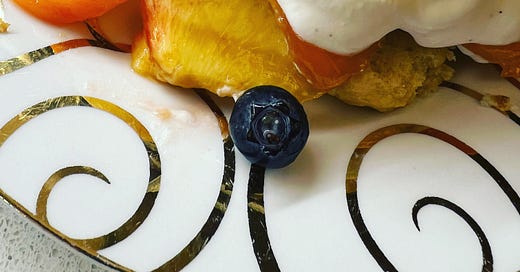


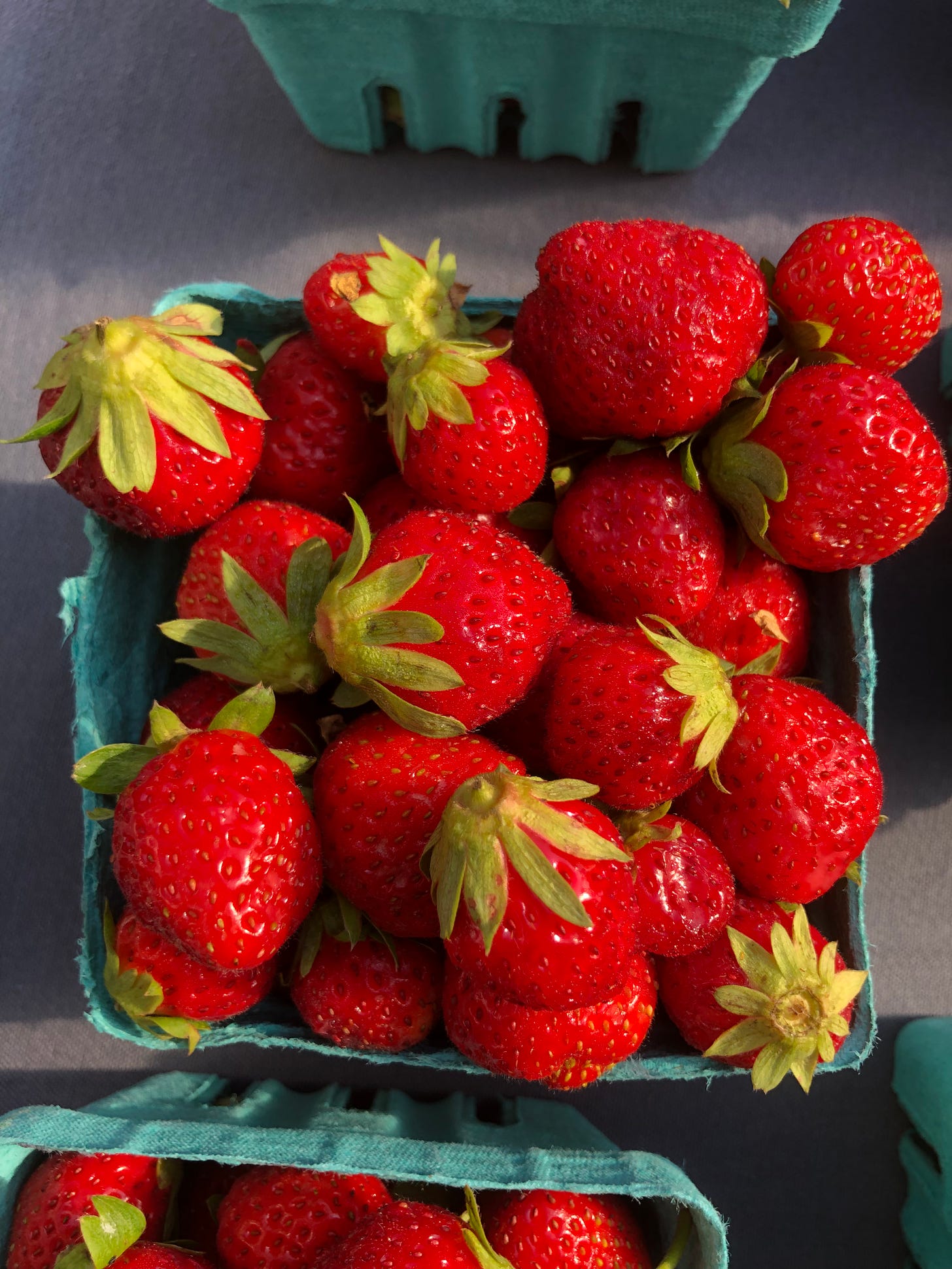
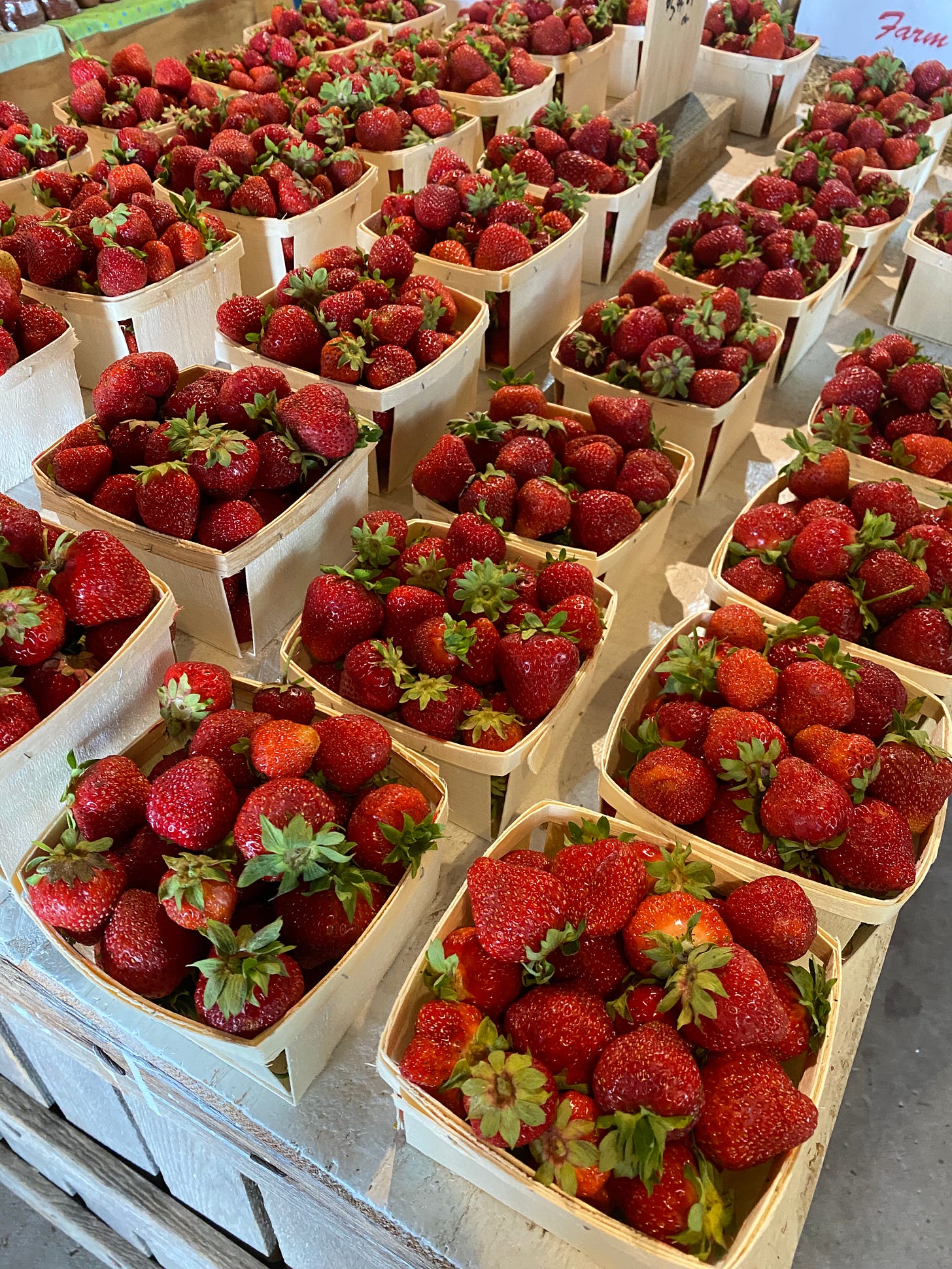
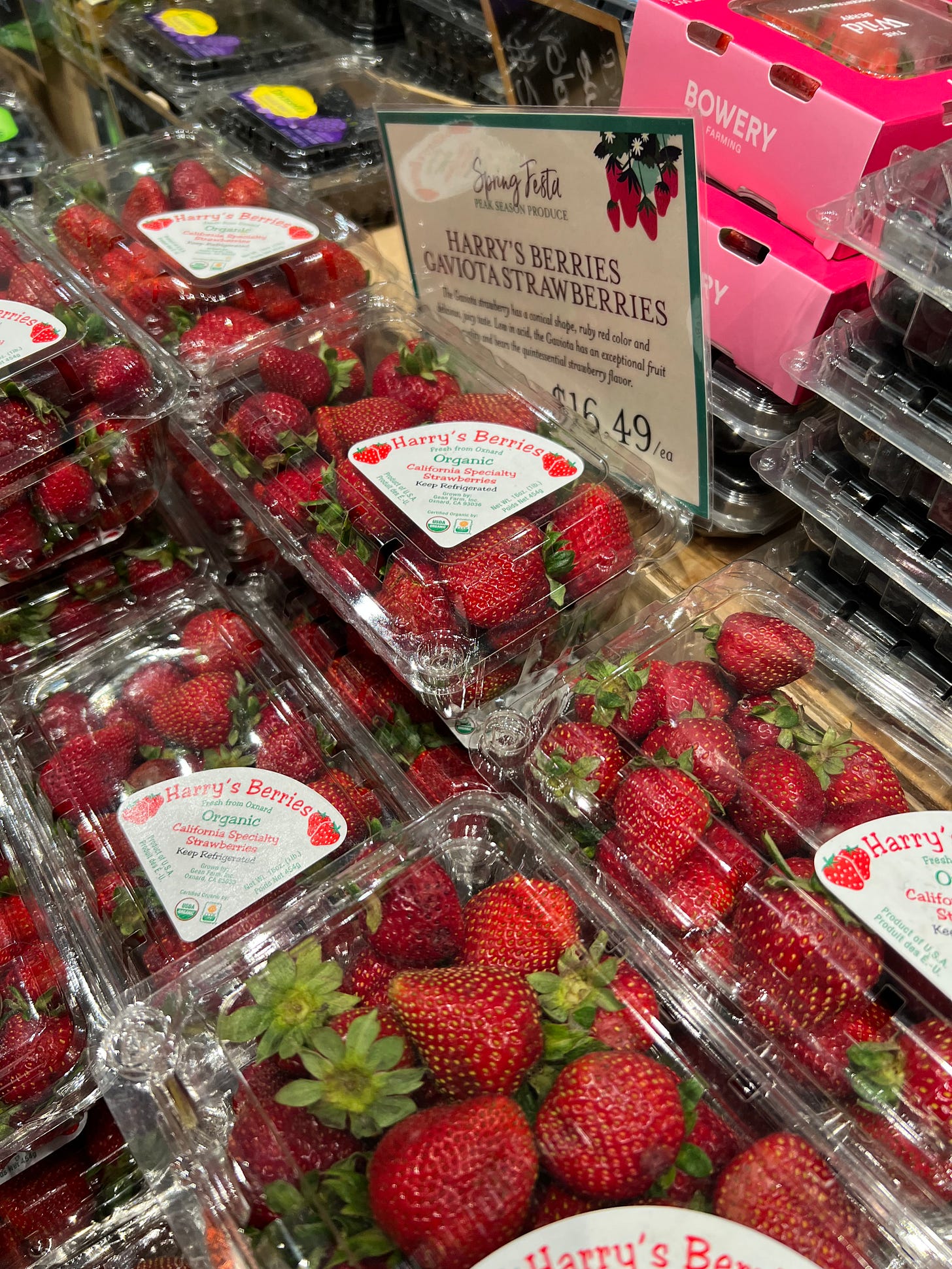
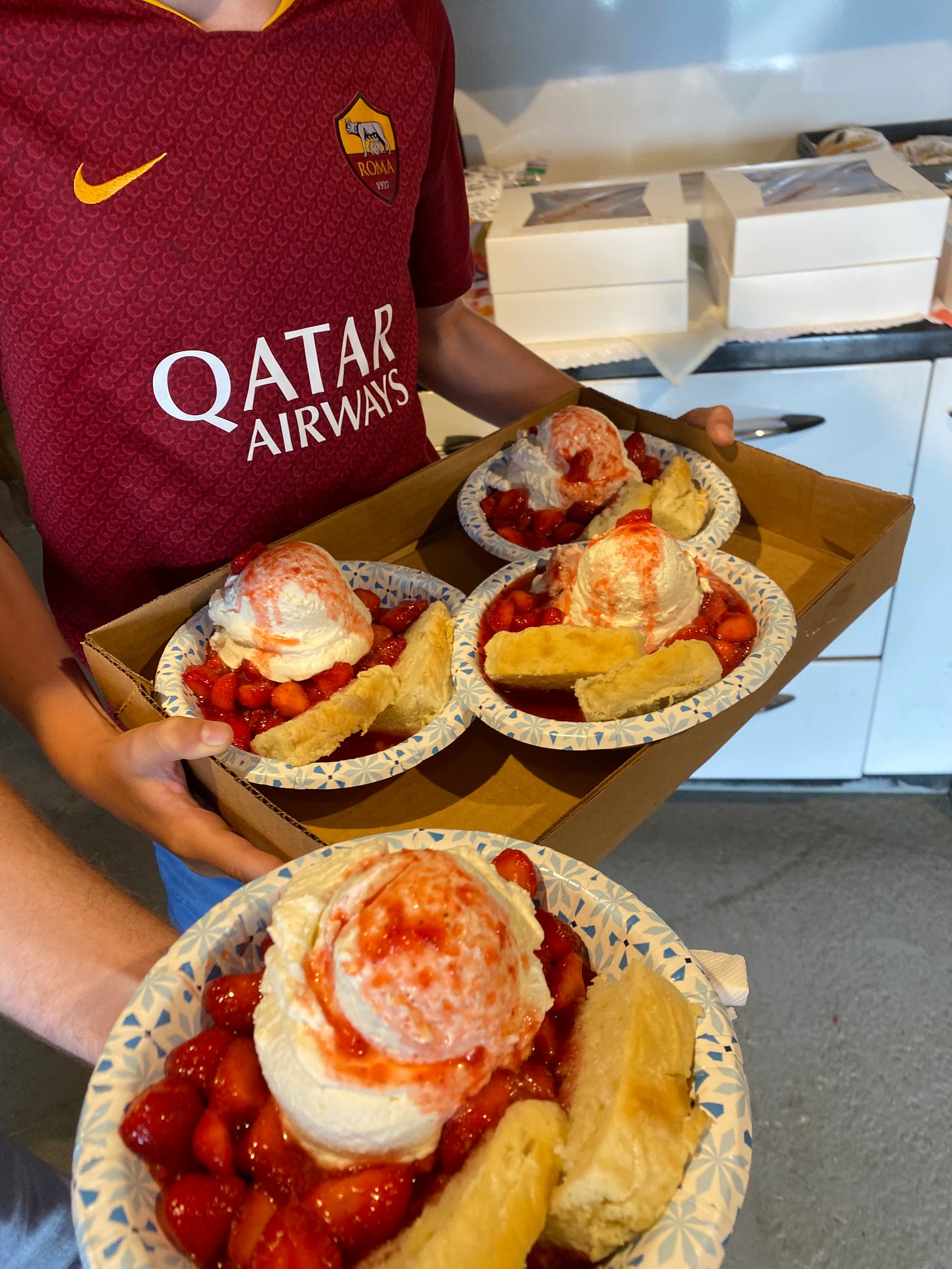
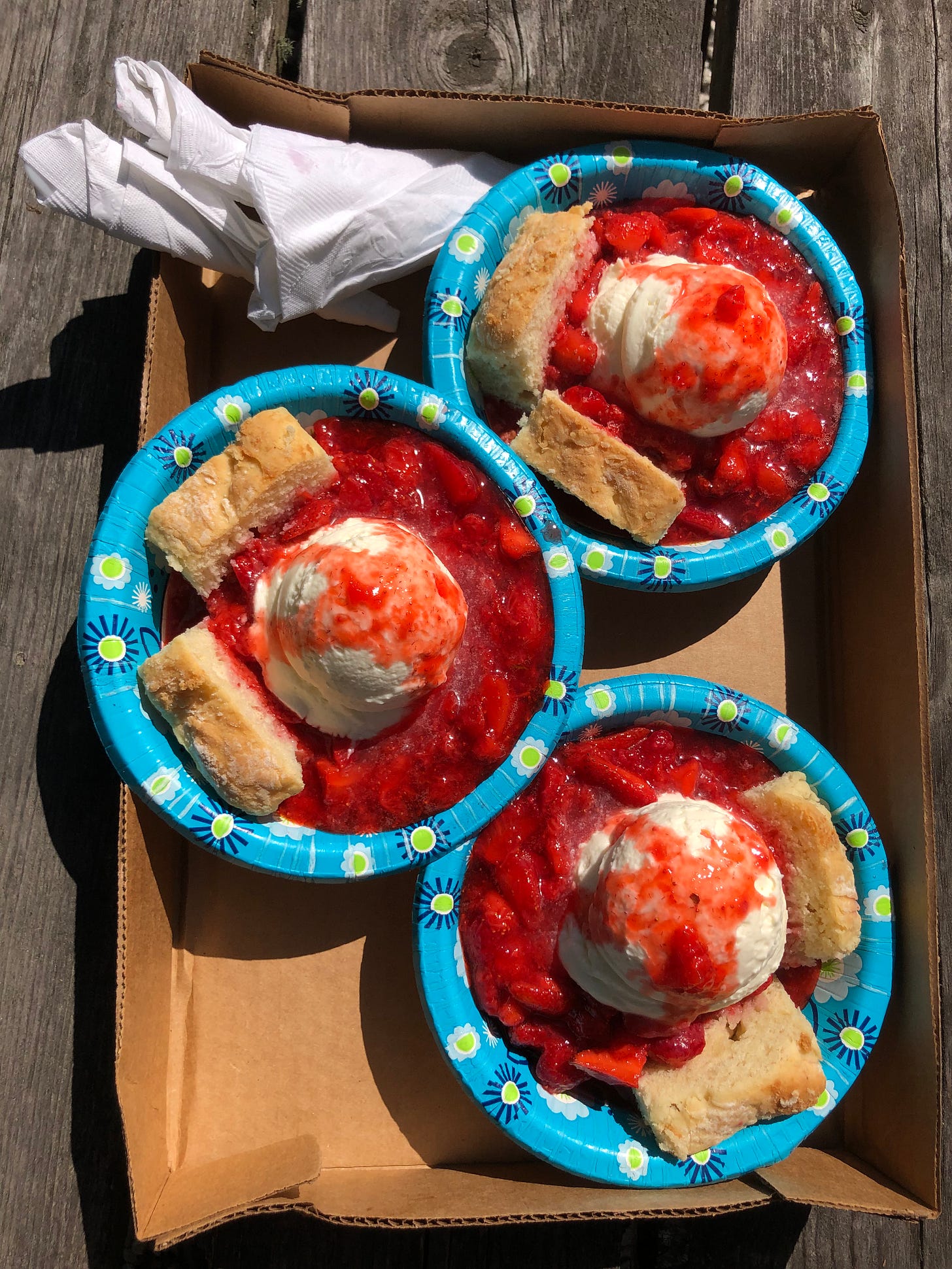
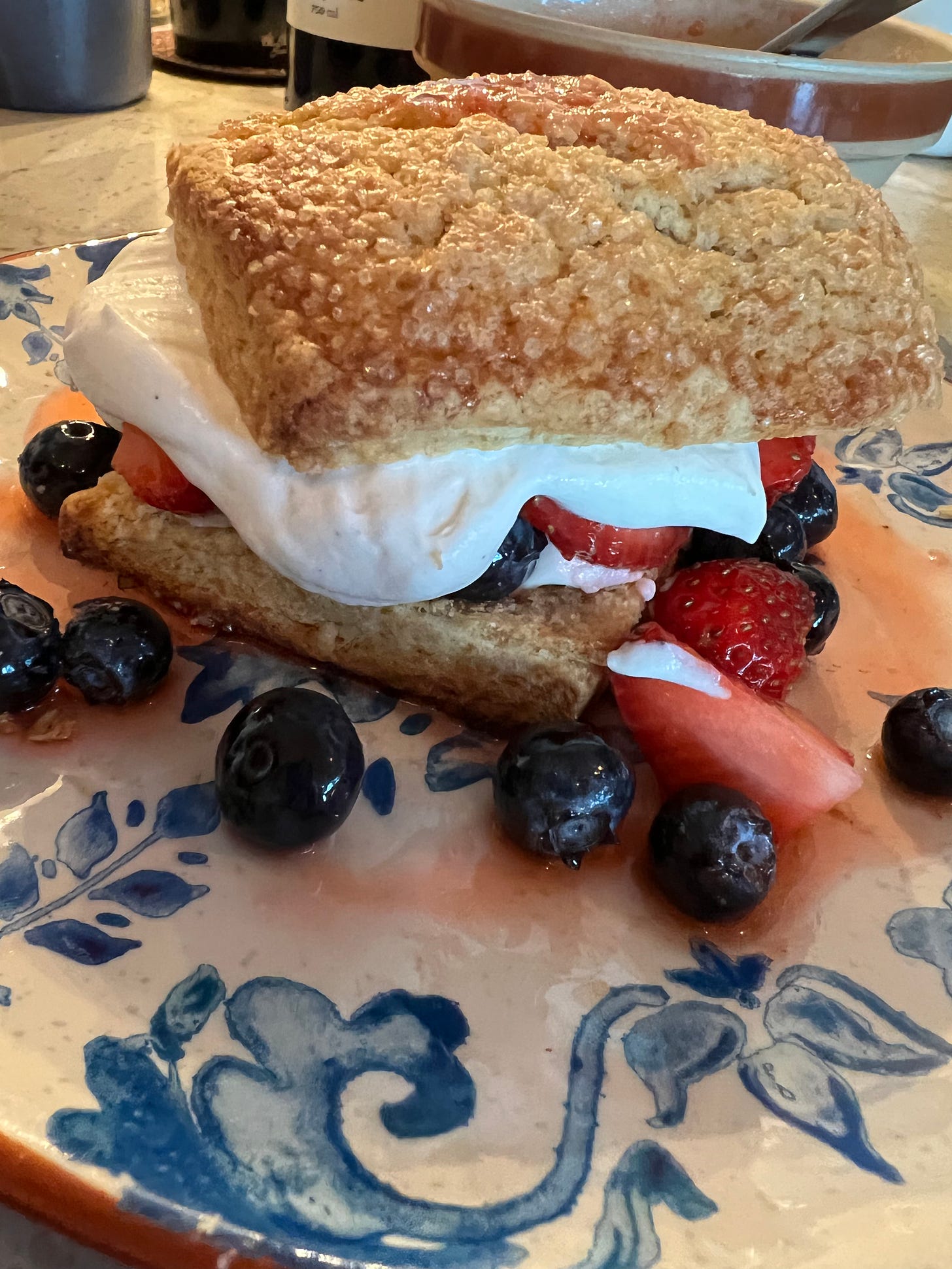
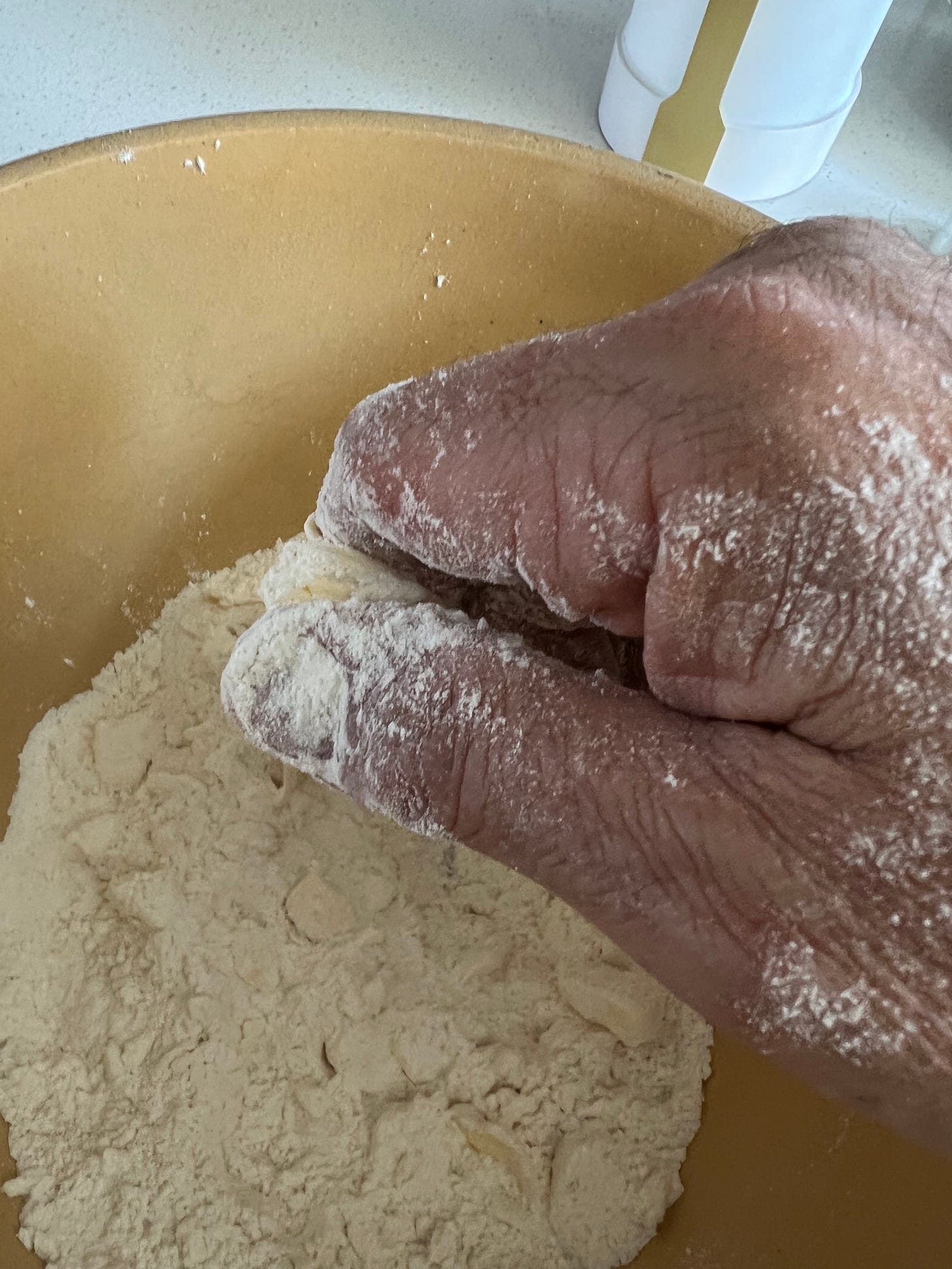
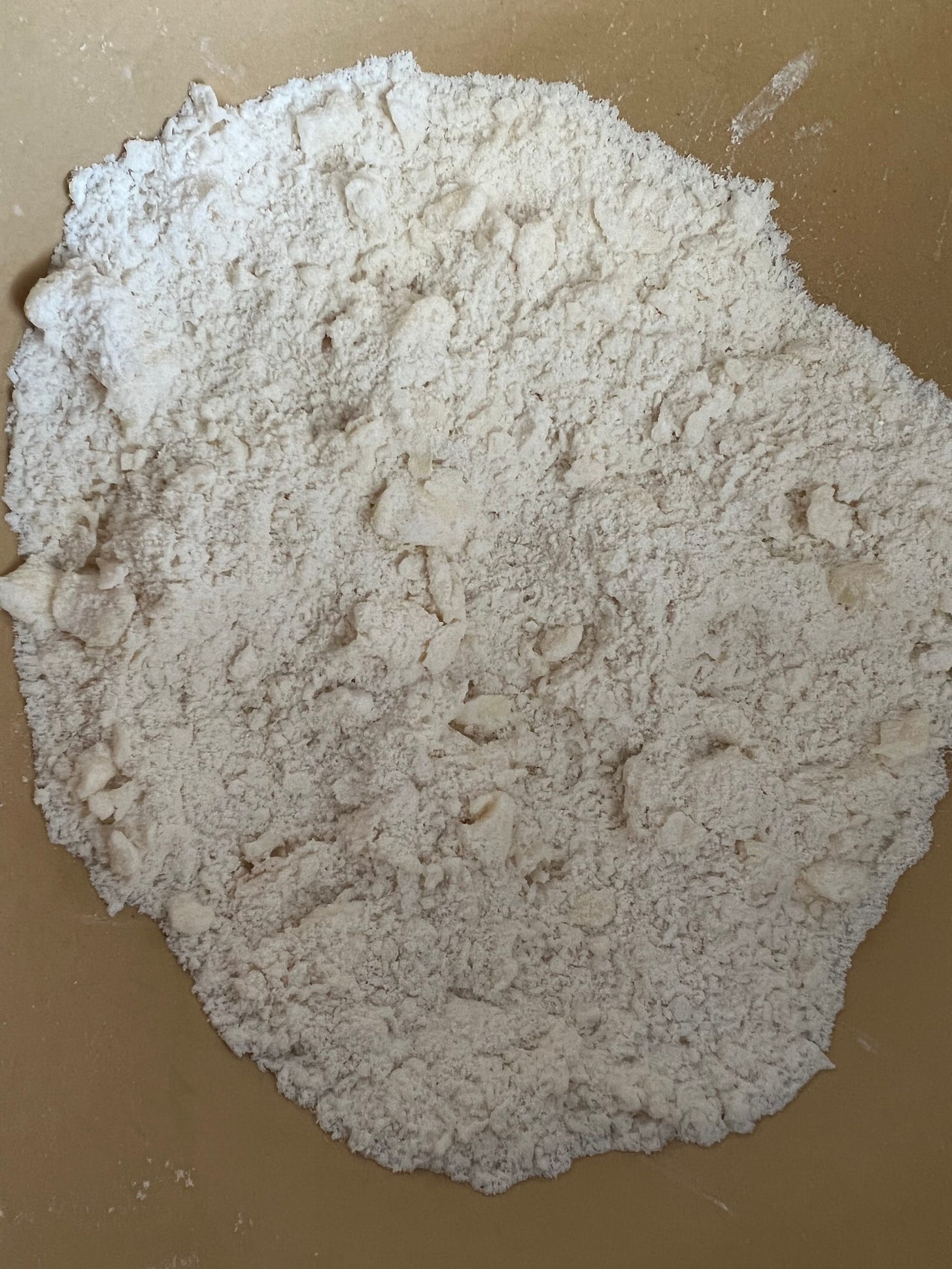
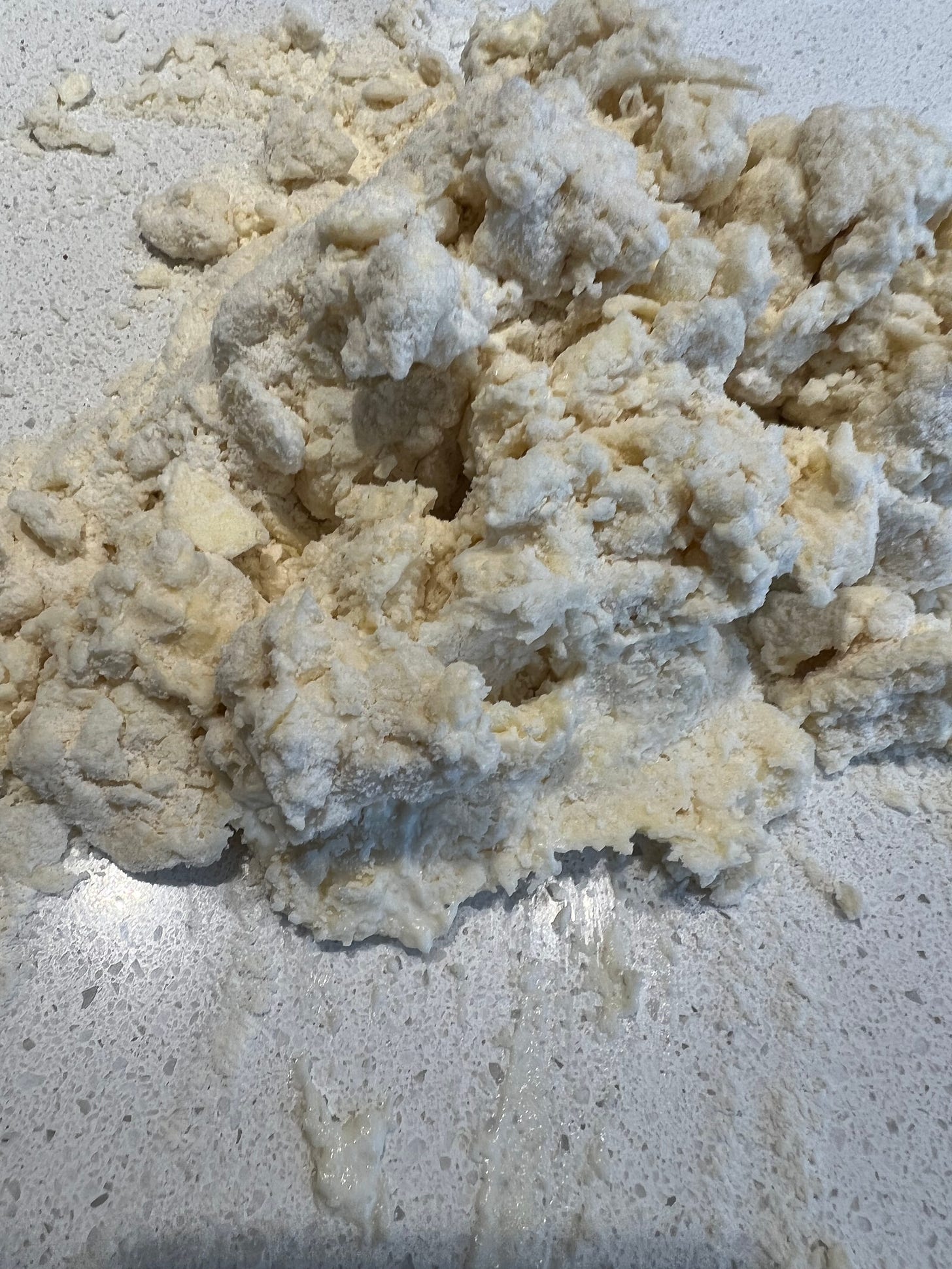
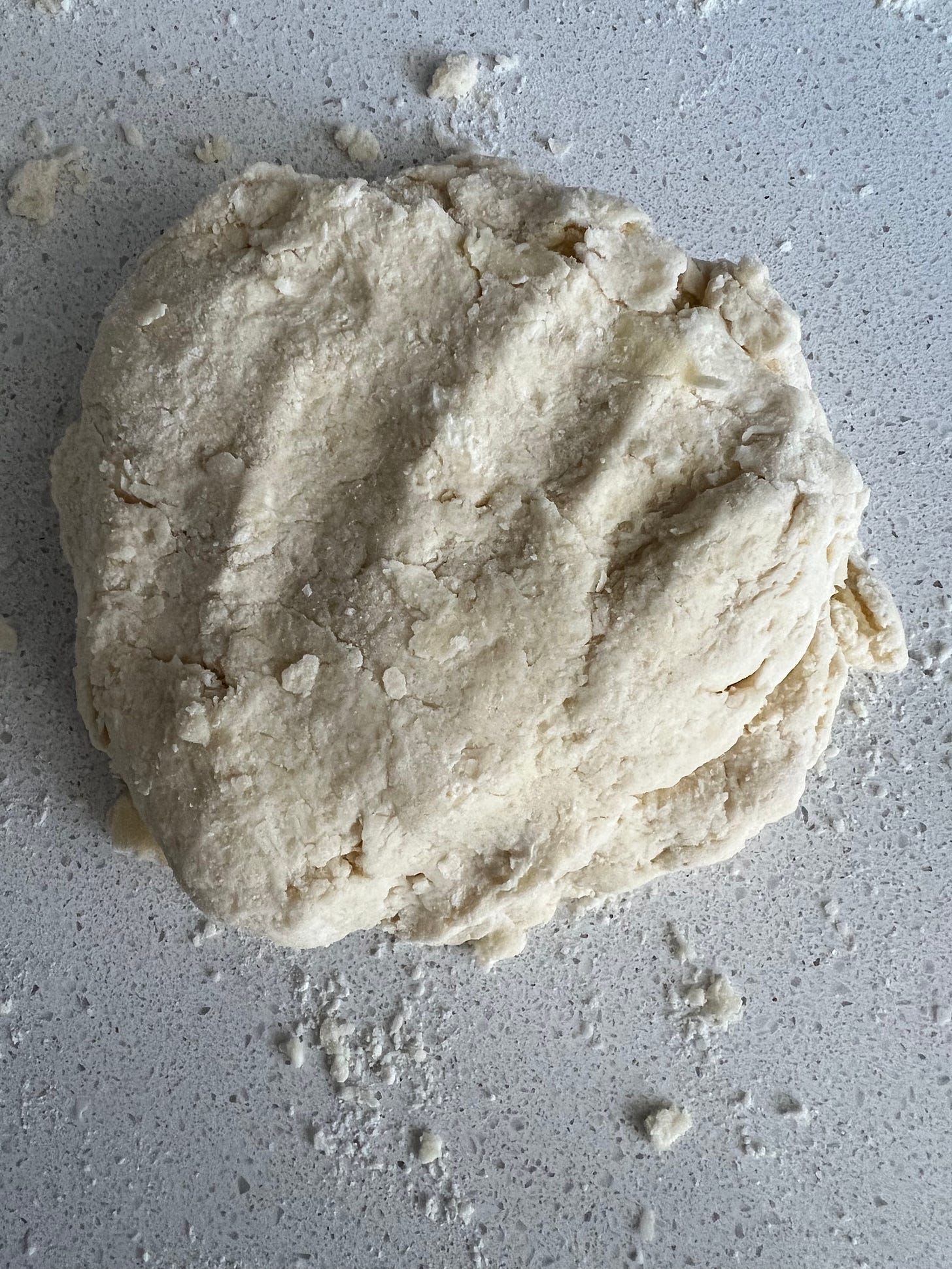
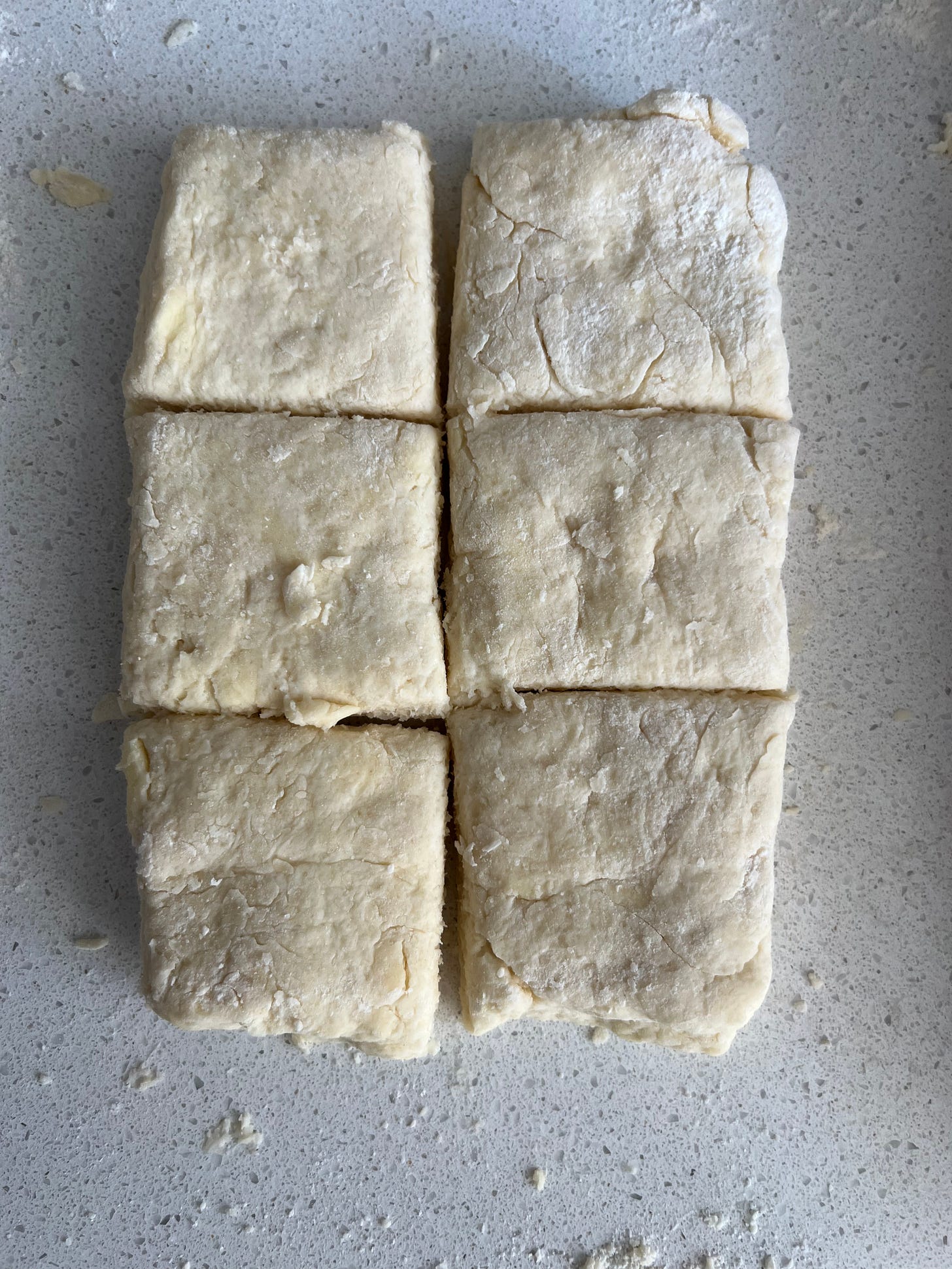
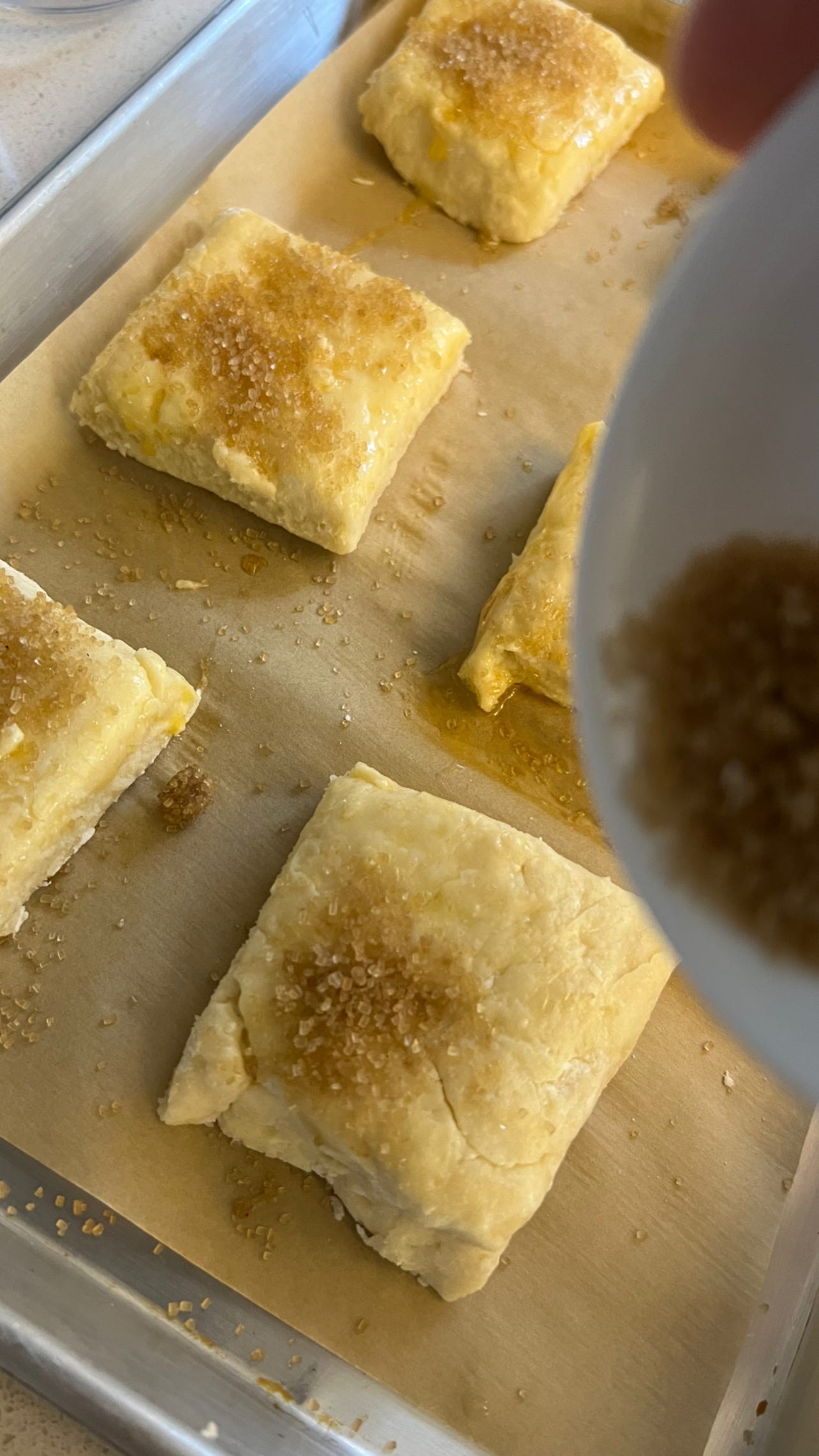
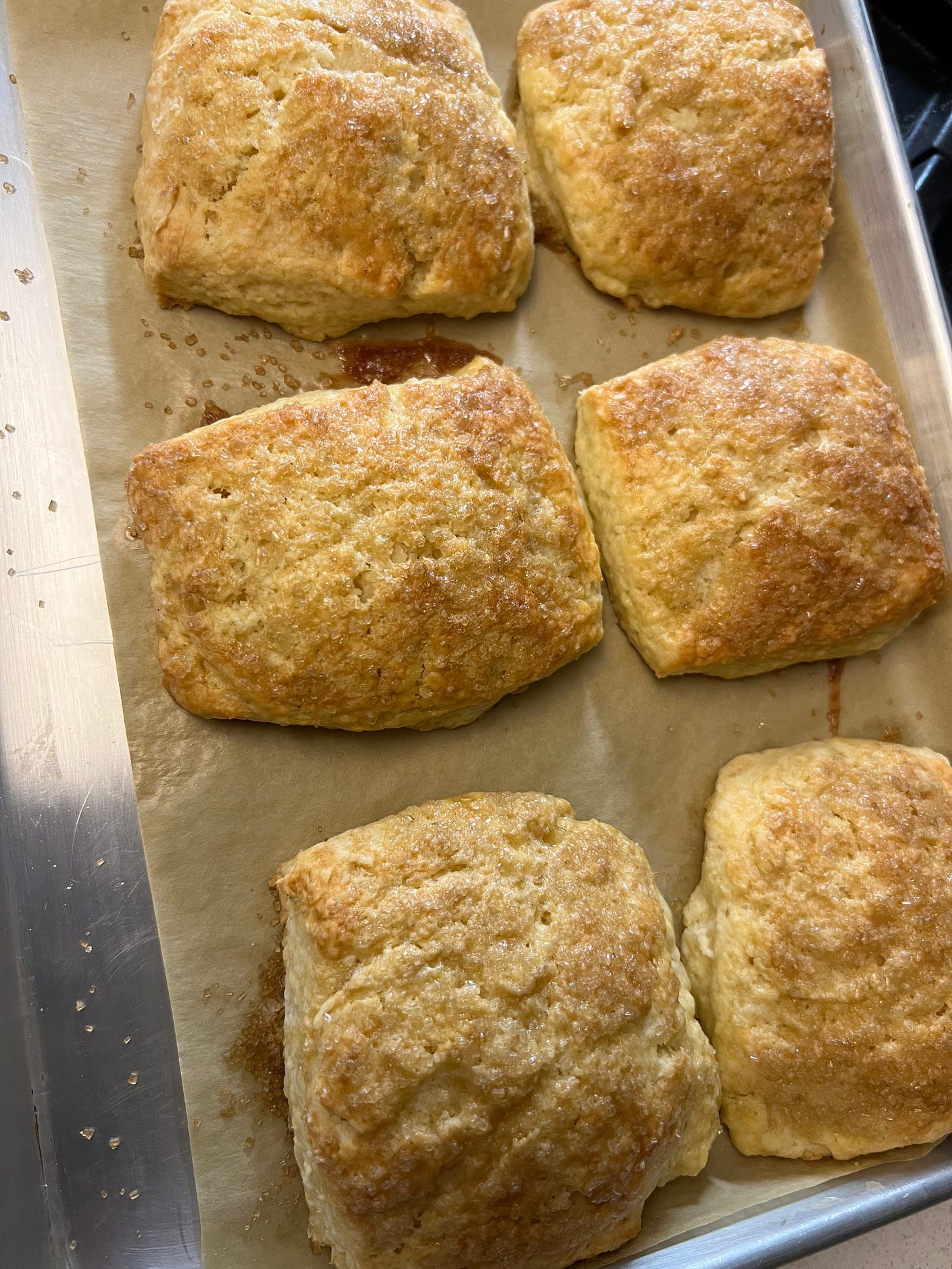

I'm clearly not the only person with strawberries on the brain! :) That shortcake looks incredible.